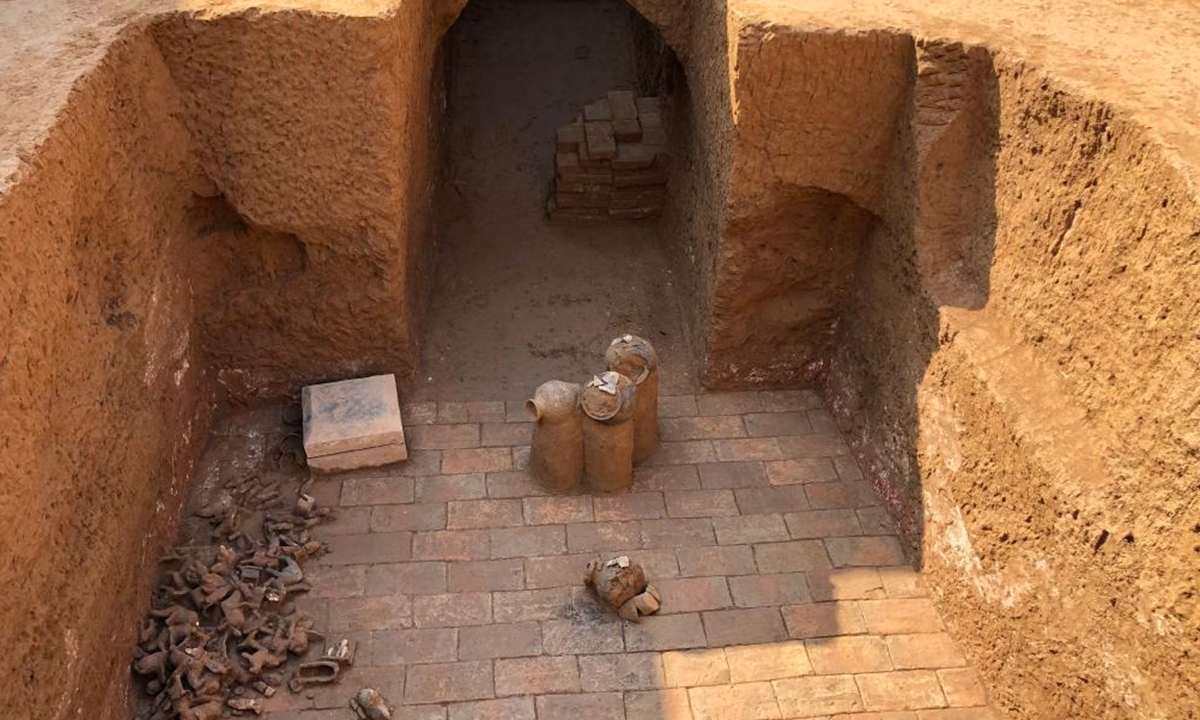ARTS / CULTURE & LEISURE
Archaeologists report new findings at famous Qinghai tomb

This undated file photo shows a relic unearthed at the tomb of Yuwen Jue, the founding emperor of the Northern Zhou Dynasty (557-581), in Beihe Village, Weicheng District of Xianyang, northwest China's Shaanxi Province. Archaeologists in northwest China's Shaanxi Province have discovered the tomb of the founding emperor of the Northern Zhou Dynasty (557-581) in the city of Xianyang, according to the Shaanxi Academy of Archaeology on Tuesday.(Shaanxi Academy of Archaeology/Handout via Xinhua)
Archaeologists have recently made more discoveries at one of the largest tombs in the Qinghai-Xizang Plateau, Xinhua News Agency reported on Monday.
Commonly known as the Yangjuan tombs, or sheepfold tombs among the locals, this newly researched tomb complex belongs to Reshui graveyard site which was built during the Tuyuhun-Tubo period of the early Tang Dynasty (618-907) in Dulan County, Haixi Mongolian Tibetan Autonomous Prefecture, Northwest China's Qinghai Province, according to the Reshui archaeological team.
As early as in 2018, the Reshui graveyard site had become famous as the large Xuewei tomb No. 1 complex was found there. The complex became known for its unique structure, with cypress wood crossbeams. With a total of nine layers, it became known as "Eastern Pyramid" and gained nationwide fame.
It was speculated that the tomb's occupant might have been Mohehun Khan, a local ruler. Later excavations found even larger tombs than the Xuewei tomb No. 1 complex.
In addition, contrasting with the Xuewei tomb No. 1, the Yangjuan tombs feature a different number of subsidiary buildings and a unique layout in terms of ritual structure. It suggests a potentially higher social status than Mohehun Khan of the Xuewei tomb No. 1, marking a significant advancement in the study of ancient Chinese tomb systems.
The Yangjuan tombs excavation work started in 2023. After three months of excavation in that year, the archaeology team revealed the layout and architectural structure of the tomb complex.
The archaeological team noted that it had discovered a massive 50-square-meter above-ground tomb complex.
The team explained that inside the largest building of the Yangjuan tomb complex, they found a brick-built square-shaped ritual platform. This discovery provides crucial clues for experts to further unravel the identity and significance of the tomb's occupant.
"Excavation of the Yangjuan Tombs signifies a big advancement in the study of ancient tomb systems in the Reshui graveyard site and even across the Qinghai-Xizang Plateau," Luo Jia, a Chongqing-based archaeologist, told the Global Times on Tuesday.
"These new discoveries are thanks to interdisciplinary collaboration and the application of new technologies such as laser scanning, high-precision digital elevation models, and 3D scanning, enhancing the precision and comprehensiveness of archaeological work within the tomb complex," said Han Jianhua, a research fellow at the Institute of Archeology, Chinese Academy of Social Sciences.
"These technologies can also be expected to provide more accurate data for determining the number of tombs and their protective measures," Luo added.
Reshui graveyard site in Qinghai was selected as one of the "Top 100 Archaeological Discoveries of the Century" in China in 2020.
